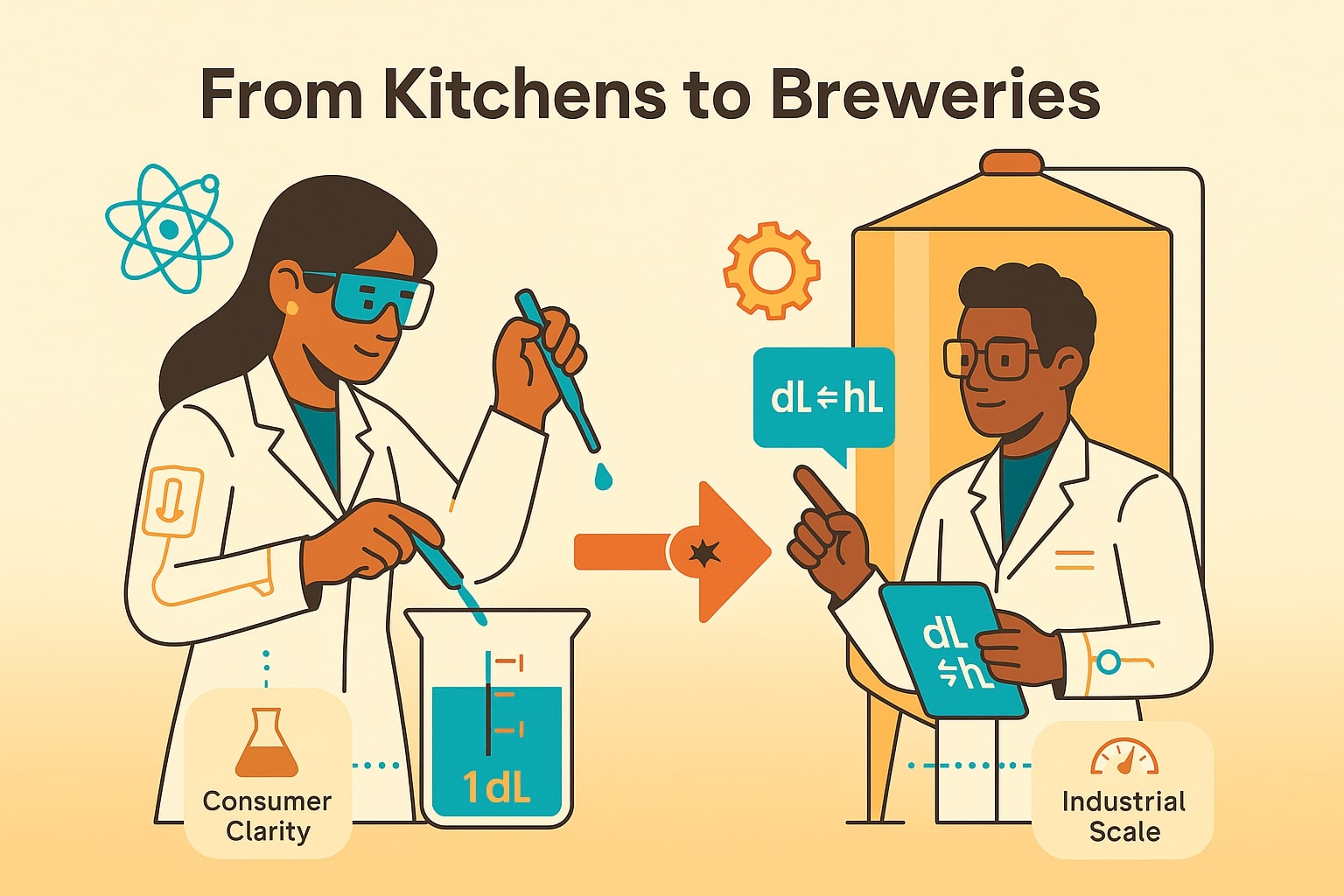Deciliter to Hectoliter – How to convert dL to hL
Need to go from deciliter to hectoliter? While both are part of the same metric system, they sit at completely different ends of the scale. One is for small, everyday liquid measurements, the other for massive production volumes. Whether you’re scaling up a recipe, working in food production, or just curious, Jetcalculator can help you make sense of it. Here’s everything you need to know to do the math (without the headaches) – plus some real-world uses and fun facts about these two units.
.jpg)
What exactly is a deciliter (dL)?
A deciliter is a metric unit that represents one-tenth of a liter (0.1 L). It’s popular in European cooking and beverage recipes, where precision is needed without working in milliliters.
For example, Scandinavian cookbooks often list milk or broth in deciliters because it’s a neat size – bigger than a tablespoon, smaller than a full cup. Ten deciliters make up a liter, making it easy to scale recipes up or down.
And what about a hectoliter (hL)?
On the other end, a hectoliter is equal to 100 liters. It’s a big number, so you won’t see it in recipes – but breweries, wineries, and farms use it constantly to track production.
A single hectoliter can fill about 133 standard wine bottles (750 mL each), so it’s the go-to unit when you need to talk about bulk liquid quantities without getting lost in zeroes.
How do you convert deciliter to hectoliter?
Because both units are tied directly to liters, the conversion is just a matter of scaling by powers of ten:
1 hectoliter = 1,000 deciliters (1 hL = 1,000 dL)
To convert:
Hectoliters (hL) = Deciliters (dL) ÷ 1,000
For example, say you’re working with 25,000 dL of juice:
25,000 ÷ 1,000 = 25 hL
Not in the mood for math? Our Volume Converter or other Conversion tools can handle the conversion instantly, even for messy numbers.
Did you know?
-
A 1-liter water bottle equals 10 dL, so it would take 1,000 bottles to make up a single hectoliter.
-
The largest beer tank at Oktoberfest can hold over 1,500 hL, which equals 1.5 million dL of beer – enough to pour roughly 3 million half-liter mugs.
-
In Swedish kitchens, recipes often list liquids in deciliters, while breweries in the same region track production in hectoliters – two ends of the same scale, often within the same industry.
-
The average milk cow produces about 3,000 liters of milk per year, or 30 hL – which translates to 300,000 dL when broken down for processing and packaging.
From Kitchens to Breweries: Why These Units Coexist
In the 20th century, as European trade and production grew, it became common to use deciliters for household cooking and retail packaging while reserving hectoliters for farms, wineries, and breweries. Historical records from The Brewers of Europe note that breweries adopted hectoliters because it simplified reporting and export, while deciliters were easy for consumers to understand on labels.
This dual-unit system still works today: businesses can track huge production volumes in hectoliters, while customers see serving sizes in deciliters or milliliters – all without leaving the metric system.

Wrapping It Up
Switching from deciliter to hectoliter is simple: divide by 1,000. Even though the two units feel worlds apart, they’re part of the same easy-to-scale metric chain, which is why they work so well together in industries from food to beverages.
For quick and stress-free conversions, use our Volume Converter or explore more Conversion tools to handle any measurement challenge with ease.

